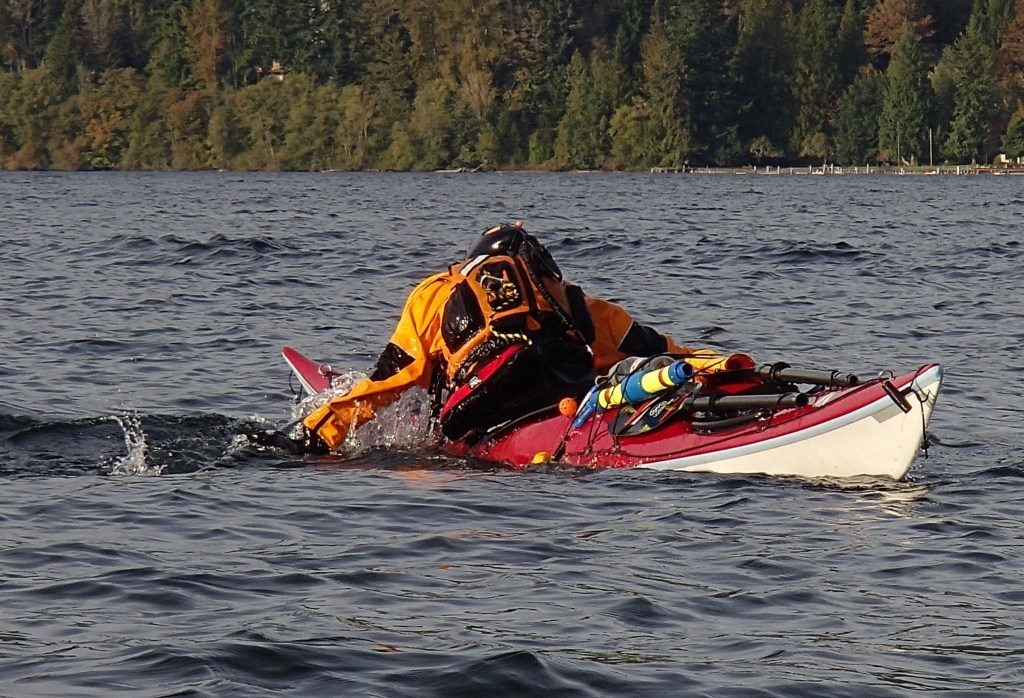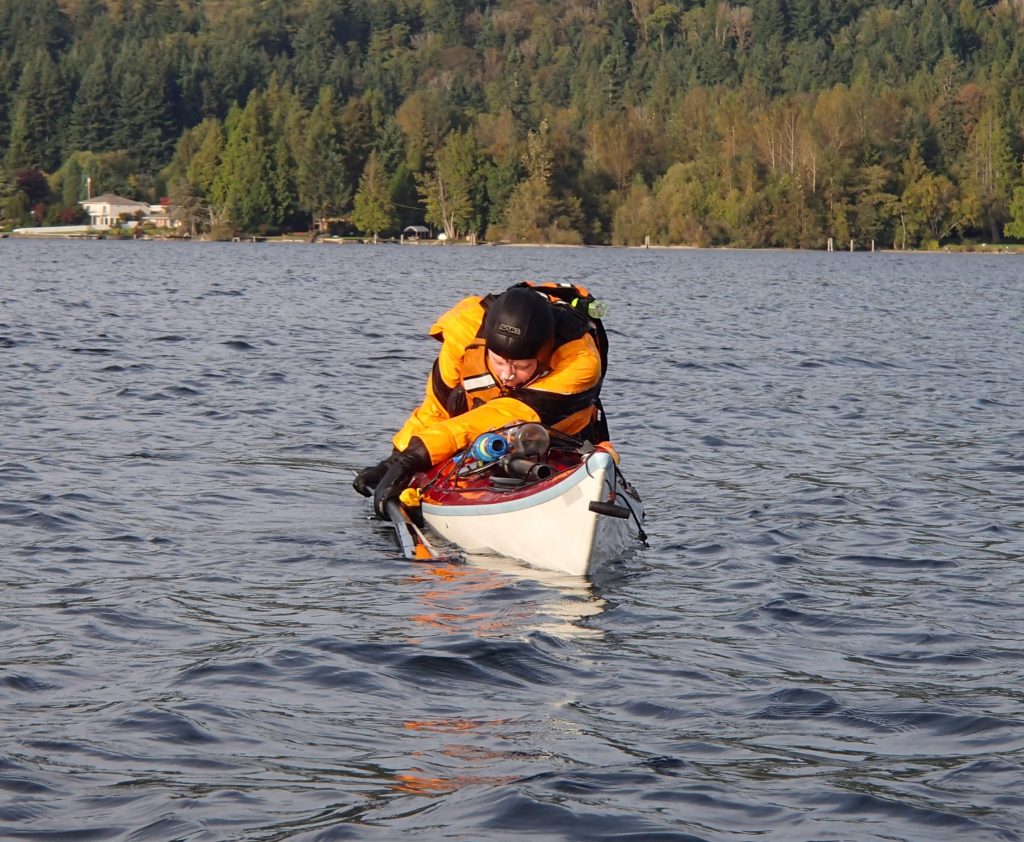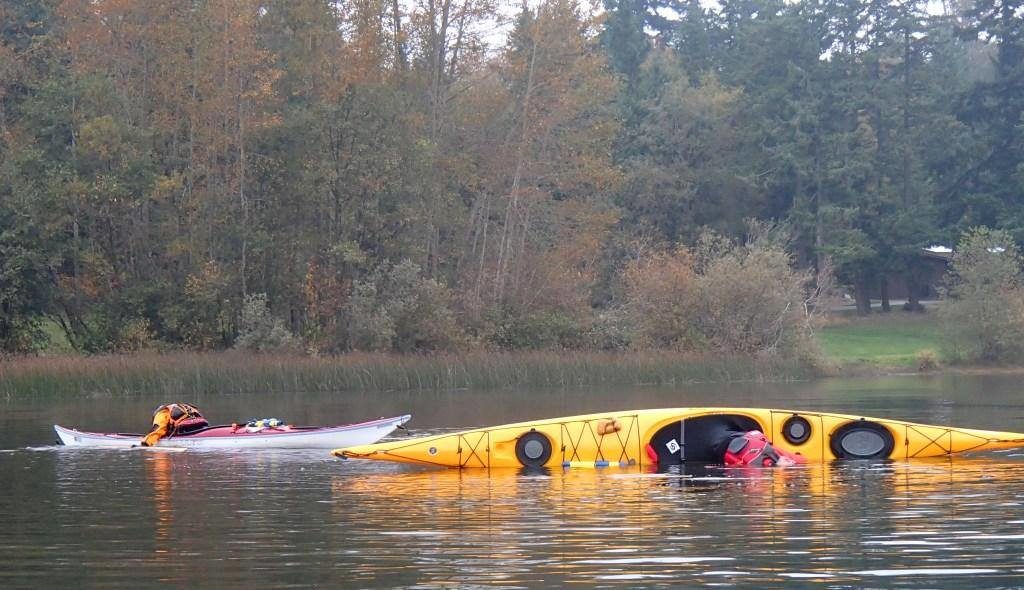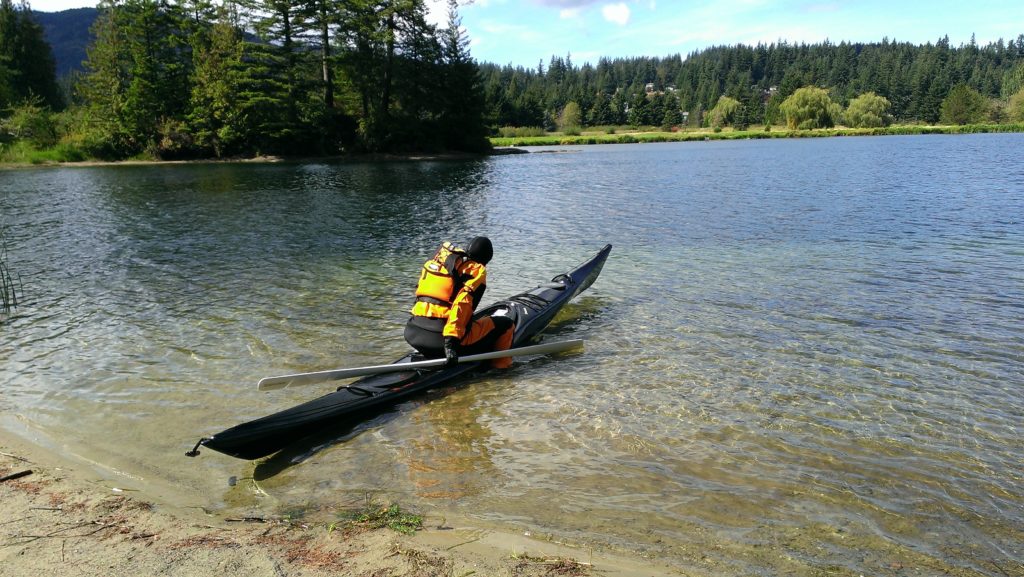Why do People Want to Learn to Roll a Sea Kayak?
Recently, a student asked me, “Why do people want to learn to roll a sea kayak?” It was a question that surprised me, and made me think. To me, the answer to that question always seemed self evident. However, this question underscored the fact that different paddlers learn to roll for different reasons, and not all of those reasons necessarily match my own. If you’ve ever wondered why you might want to learn to roll, read the reasons I’ve listed below.
Learn To Be More Comfortable in a Kayak - Both Above and Below Water
You can’t learn to kayak without capsizing. If you push your skills and your limits, you will, eventually, end up under water. That’s ok. It’s normal, and it’s a soft landing, even though some of us are more ok with being in the water than others. In the process of learning to roll, we learn to tame gasp reflexes, orient ourselves underwater, and be more relaxed and confident after a capsize. The more comfortable you are taking time to set up your roll, the more dependable your roll will be. A mentor taught me that growth means conquering the unknown. Once you stop dreading a capsize and feel comfortable relaxing under water, your potential for growth as a paddler greatly increases. Check out these links if you are interested in learning to roll in order to become more comfortable in your boat – both right-side up and upside down:
Qajaq Rolling Instructional Videos
What Kayakers Can Teach Us About Living Well
A Meditation on Floating
Rolling is the Ultimate Rescue
From a standpoint of practicality, rolling is the most efficient rescue. If you can roll, it means that you won’t have to wet exit after a capsize. This definitely saves time, and time can be of great importance if you are paddling in foul weather, busy shipping channels, or challenging water conditions. The faster you are rescued, the more quickly you can resume paddling to avoid hazards. Not having to wet exit also means that you reduce risk of being separated from your boat or other gear. Challenging conditions can make holding on to your boat and paddle difficult while you attempt a self or assisted rescue. Being separated from your gear is dangerous, and in rough water/ foul weather, losing hold of your gear can lead to disastrous consequences. Paddlers who want to learn to roll for this reason generally learn a couple of styles of rolls – the layback sweep roll and the C to C Roll. If you are looking for a more efficient rescue, check out the links below:
Qajaq Rolling Instructional Videos
Neptune Rangers – Whitewater Kayaking in the Ocean (This is an extreme example of the usefulness of rolling as a rescue.)
What Kayakers Can Teach Us About Living Well
Rolling is FUN and RELAXING
Ted jokes that I spend more time upside down in my boat than I do right-side up. Not quite – but I do love to roll. Once you learn your first roll, your movement throughout your roll is heavily reliant upon muscle memory. For some paddlers, this aspect of rolling can feel like meditation and yoga at the same time. If you are rolling just for the joy of it, the slower the roll, the more smooth and dependable it is. Rolling rewards you for floating, taking your time, and relaxing. When I’m underwater, day’s stresses fade away, and all the thoughts racing in my head (chores, grocery lists, deadlines, etc) slow down. I check in with my body, the water, the elements, my breathing, and my emotional state. After a couple of rolls, my chest, shoulders, back, and neck are all more loose and relaxed, and I’m breathing more deeply. If you try rolling, and you hate it, that’s not abnormal. Not everyone enjoys it. But, if you are like me (a stress monger who finds no relief in attending a yoga class with 20 other stressed-out people), rolling might be for you. If you are interested in rolling for the benefits of flexibility or relaxation, check out these links:
Yoga for Kayakers
Qajaq Rolling Instructional Videos
What Kayakers Can Teach Us About Living Well
A Meditation on Floating
Rolling is Challenging
I’ve been known to joke that even my blood is type A. I’m the kind of person who likes to push myself hard. If you want it to be, rolling can be very challenging, both physically and mentally. There are a lot of variables in rolling, and that provides endless opportunities for learning something new. You can learn to roll with both a Euro Blade and a Greenland Stick. If you’ve got one roll down and it becomes easy, challenge yourself by learning the roll on your off-side. If that becomes boring, challenge yourself by learning a new roll. There are 35 different Greenland rolls. If you get through all 35 rolls and have them down pat on both sides, you can find other ways to challenge yourself. Take part in rolling competitions or add your own personal spin to traditional rolls. The world’s best rollers develop all kinds of “parlor tricks” to challenge themselves. Dubside rolls with bricks, lawn chairs, and found objects from the beach. The sky is the limit when it comes to challenging one’s self while learning to roll. All it takes is proper boat fit, flexibility, time, determination, and a willingness to spend a lot of time underwater. If you are rolling for the challenge of it, check out these links:
Rolling Competition Information
Qajaq Rolling Instructional Videos
Rolling Instructional Videos
Maliqiaq
Helen Wilson Video
Dubside & Maligiaq Video
Neptune Rangers – Whitewater Kayaking in the Ocean
Bragging Rights
Some people are competitive, and, often, competitive people like to hang out with other competitive people. If that’s you, you know who you are, and it’s all good. Learning different types of rolls with different types of paddles, in different boats, and different types of conditions could be considered pretty cool. And it allows you to compete not only against yourself but against others. It’s a lot like pushing your fellow running partners to run a faster mile, or striving to be able to bench press more weight than your workout friends. There are internationally recognized rolling competitions where competitors get points for not only being able to demonstrate rolls, but also style points for how well their rolls are executed. If you are rolling for bragging rights, check out these links:
Rolling Competition Information
Rolling Instructional Videos
Qajaq Rolling Instructional Videos
Maliqiaq
Helen Wilson Video
Dubside & Maligiaq Video
Neptune Rangers – Whitewater Kayaking in the Ocean







